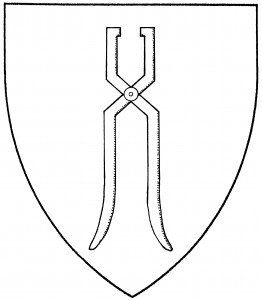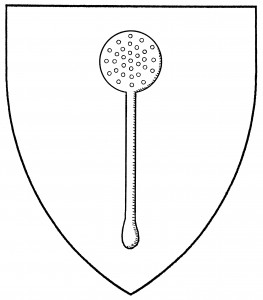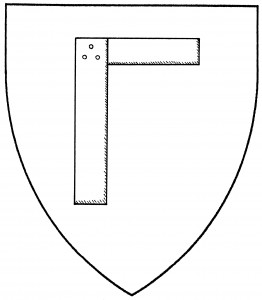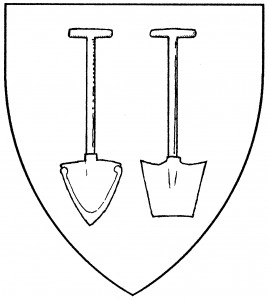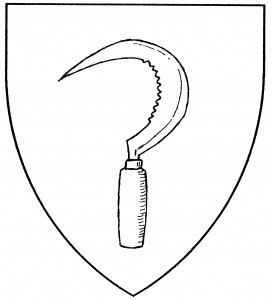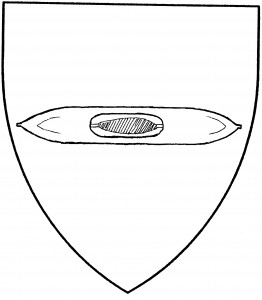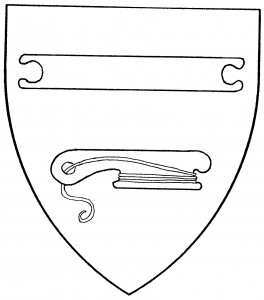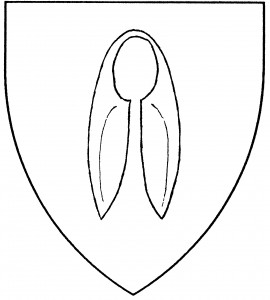
Pair of shears (Period)
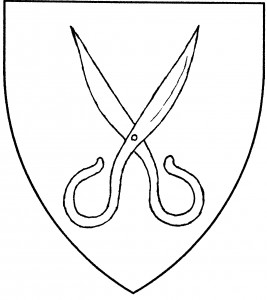
Pair of scissors (Period)
Shears (more fully a “pair of shears”) is a cutting instrument with a pair of opposing blades joined by a spring. Medievally, they came in several sizes, from large shears the height of a man (used to shear the wool from sheepskin) to small hand-held shears used by seamstresses in sewing; the latter are also called “snips”. The blades might have either pointed or rectangular ends; rectangular ends are perhaps more common in mundane heraldry (as in the arms of Gennip or Gennep, c.1370, [Gelre 88v]), but the triangular blades are also found (Langen, 1605 [Siebmacher 181]). The latter are more popular in the Society.
Shears have their blades to base, slightly open, by Society default.
Related to shears is the “scissors” or “pair of scissors”: the opposing blades pivot on a bolt, and have handles on the other end to open and close them. Scissors are likewise a period charge, found in the arms of Jungingen, c.1340 [Zurich 196], and the Guild of Tailors of Basel, 1415 [Volborth 184]; the handles should not be drawn in the modern ergonomic design. Society heraldry distinguishes between the shears and the scissors, though little heraldic difference is granted. The scissors’ default orientation is with points opened to chief, but that fact is frequently blazoned explicitly.
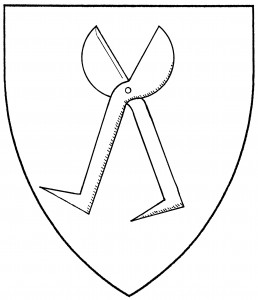
Blanking shears (Accepted)
In Society armory, we find “blanking shears”, which despite the name, are actually like scissors in design: they’re made for cutting metal blanks, as for coins. As with scissors, their default orientation is with the blades to chief; the illustration is taken from a woodcut by Hans Burgkmair the Elder, c.1500.
Agnes Cresewyke bears: Gules, three pairs of shears Or.
Carlos Blanco el Barbero bears: Per chevron azure and gules, a pair of scissors argent.
Ian Cnulle bears as a badge: Argent, a pair of open blanking shears, handles interlaced with a hammer fesswise reversed, all between three roundels sable.

